The Philippines is a country known for its stunning natural beauty, rich culture, and warm hospitality. With over 7,000 islands, it can be overwhelming to decide where to visit. In this article, we will explore the 10 best cities to visit in the Philippines, each offering a unique blend of history, adventure, and picturesque urban landscapes.
1. Manila City
Manila, the capital city of the Philippines, is brimming with history and culture. While it may not be the largest, wealthiest, or most organized city in Metro Manila, it is well worth a visit for its historical landmarks and vibrant street culture.
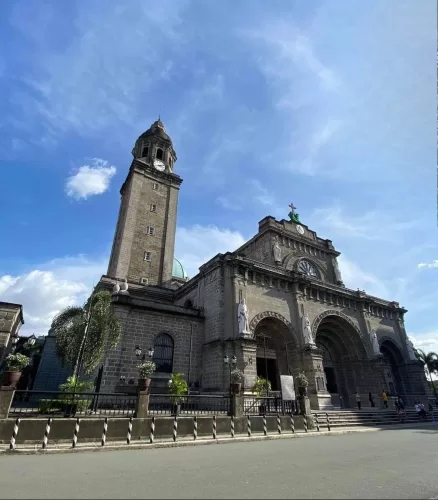
Top Attractions:
- Intramuros: Historic walled city showcasing Spanish colonial architecture in Manila, Philippines.
- Rizal Park: Iconic urban park honoring national hero Jose Rizal with monuments, gardens, and historical significance.
- Binondo: The oldest Chinatown in the world, bustling with vibrant markets, authentic Chinese cuisine, and rich cultural heritage.
- Quiapo: A dynamic district known for the Quiapo Church and a bustling market scene in Manila.
- National Museum of the Philippines: Cultural institution preserving and showcasing the country’s art, history, and natural heritage.
- Manila Ocean Park: Premier oceanarium and marine-themed park offering interactive exhibits and entertaining shows.
- Manila Baywalk: Picturesque promenade along Manila Bay, popular for sunset views, strolls, and dining by the waterfront.
2. Makati City
Makati is probably the most urbanized city in the Philippines. Known for its towering skyscrapers, upscale shopping malls, and vibrant nightlife, Makati is the country’s premier financial district and central business hub. The city is home to numerous multinational corporations, embassies, and upscale residential areas.
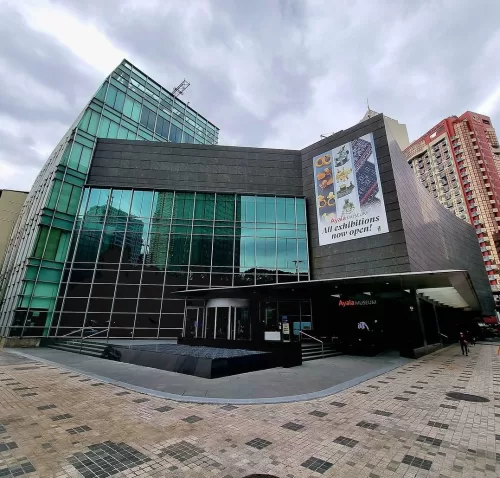
Top Attractions:
- Greenbelt: One of the biggest shopping malls in the country that houses luxury shops, bars, cinemas, restaurants, lush tropical greenery, and an elegant chapel.
- Poblacion: Dynamic neighborhood known for its vibrant nightlife, diverse culinary scene, and cultural hotspots. This is where the young people go to party.
- Ayala Museum: A privately-owned museum that houses archaeological, ethnographic, historical, fine arts, numismatics, and ecclesiastical exhibits.
- Ayala Triangle Gardens: A sprawling 2-hectare urban park, favored by many Makati residents for strolls and jogs.
- Rockwell Center: Upscale mixed-use development in Makati featuring luxury residences, commercial spaces, and a sophisticated atmosphere.
3. Cebu City
Cebu City is dubbed as the Queen City of the South. It is a major cultural, economic, and political hub in the Visayas region, known for its historical significance as the oldest city in the country. It is home to the famous Sinulog Festival, characterized by vibrant street parades, traditional dances, and a grand procession honoring the Santo Niño (Child Jesus).
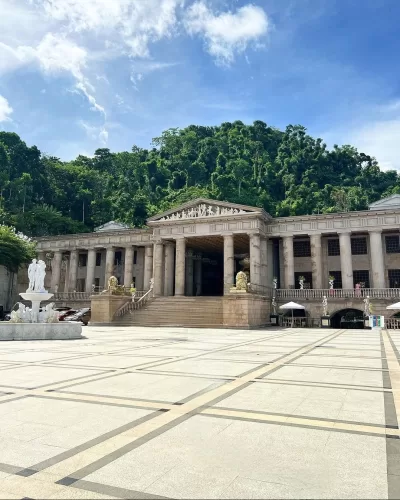
Top Attractions:
- Magellan’s Cross: A historic Christian cross in Cebu City, Philippines, planted by Ferdinand Magellan in 1521.
- Basilica Minore del Santo Niño: The oldest Roman Catholic church in the Philippines, home to the Santo Niño de Cebu statue.
- Ayala Center Cebu: A prominent shopping and lifestyle destination in Cebu, offering a diverse range of retail, dining, and entertainment options.
- Tabo-an Market: Cebu’s famous dried fish market, known for its vibrant atmosphere and a wide variety of dried seafood products.
- Temple of Leah: A grandiose temple in Cebu, built as a symbol of undying love and devotion by Teodorico Adarna for his late wife Leah.
- Plaza Independencia: A historical public square in Cebu City, featuring monuments and gardens, with significance in the country’s struggle for independence.
4. Baguio City
Baguio City, often referred to as the “Summer Capital of the Philippines,” is nestled within the mountainous region of the Cordillera Central. Its elevation of approximately 1,540 meters above sea level awards it a subtropical highland climate. This means visitors can enjoy a cooler atmosphere, often a welcome respite from the country’s typically tropical heat.
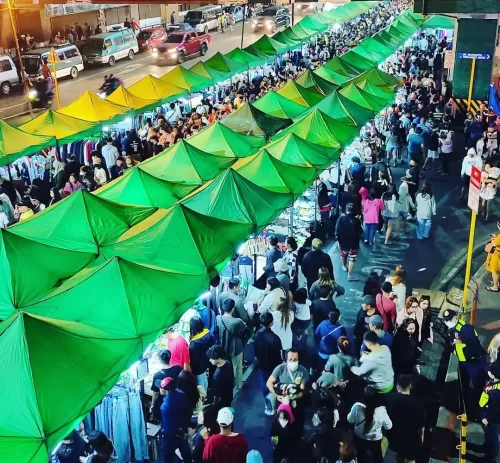
Top Attractions:
- Burnham Park: A picturesque urban park, featuring a lake, gardens, and recreational activities like boating and biking.
- Mines View Park: A popular viewpoint offering panoramic views of gold and copper mines around Baguio and the Cordillera mountain range.
- Session Road: Baguio’s main commercial street, bustling with shops, restaurants, and bars.
- Camp John Hay: Former rest and recreation facility for the U.S. Armed Forces turned resort complex, known for its historical significance and scenic surroundings.
- Baguio Night Market: A vibrant and bustling night market on the streets of Baguio, where locals and visitors can shop for a variety of cheap apparel and street food.
- Strawberry Farm: A farm where visitors can pick fresh strawberries and explore strawberry-related products in a scenic setting.
- Bencab Museum: An art museum founded by national artist Benedicto Cabrera, showcasing contemporary Philippine art and indigenous crafts.
5. Taguig City (Bonifacio Global City)
Bonifacio Global City (BGC) is a financial and lifestyle district located in Taguig City. Known for its modern architecture, upscale amenities, and vibrant atmosphere, it has become a hub for business, residential living, and nightlife. Tourists often choose to stay in BGC before flying to other islands because it is conveniently close to the airport.
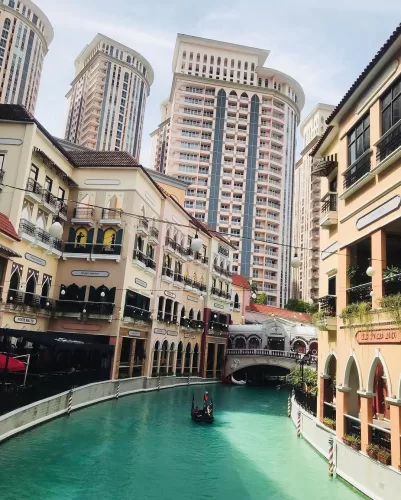
Top Attractions:
- Bonifacio High Street: A bustling outdoor retail and dining destination, offering a vibrant mix of shops, restaurants, and entertainment.
- Mind Museum: A fascinating science museum, providing an interactive and educational experience for visitors of all ages.
- Venice Grand Canal Mall: A picturesque shopping mall in Taguig, designed to resemble the iconic canals of Venice, Italy.
- The Palace: The biggest integrated nightlife entertainment complex in the country. Houses 5 distinct establishments- Xylo, The Island, Revel, Yes Please, and Clubhouse.
6. Iloilo City
Iloilo City, often regarded as the “Heart of the Philippines,” is a hub of culture, history, and gastronomy in the Western Visayas region. It’s celebrated for its Spanish-colonial churches, old commercial buildings, grand mansions, and the famous Dinagyang Festival, which gives visitors a lively taste of local culture and traditions.
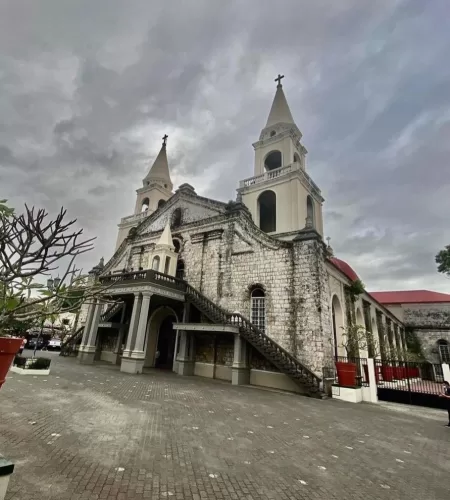
Top Attractions:
- Jaro Cathedral: Also known as the National Shrine of Our Lady of the Candles, it is a stunning church constructed in the Romanesque Revival style, deviating from semi-circular arches.
- St. Anne Parish Church: A charming Catholic church in Molo, celebrated for its all-female ensemble of life-sized statues and intricate Gothic design.
- Calle Real: The bustling main street in Iloilo City, adorned with historic luxury American era neoclassical, beaux-arts, and art deco buildings.
- Iloilo River Esplanade: A picturesque waterfront promenade along the Iloilo River, offering a scenic venue for strolls, outdoor activities, and breathtaking sunsets.
- Smallville Complex: Iloilo’s nightlife capital and a popular dining and entertainment hub, surrounded by clubs, bars, restaurants, and hotels.
7. Davao City
Davao City, is the busiest city in the Mindanao region, known for its lush landscapes and a rich tapestry of cultural heritage. It’s the largest city in the Philippines in terms of land area, and its natural biodiversity is noteworthy, with Mount Apo, the highest peak in the country, gracing the region.
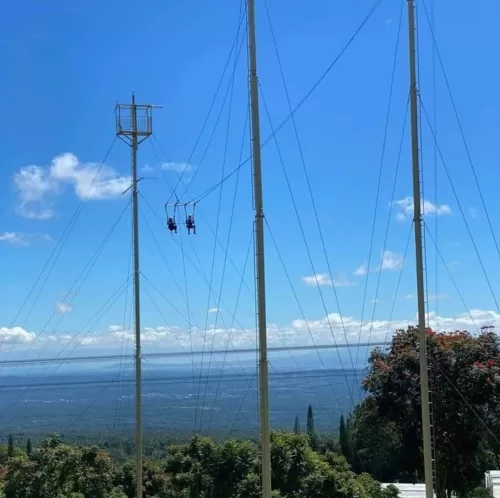
Top Attractions:
- People’s Park Davao: A 4-hectare public park featuring a mini-forest, man-made falls, a dancing fountain at night, fish ponds, a children’s playground, and the famous giant durian dome.
- Roxas Night Market: A bustling open-air market, known for its diverse array of street food, local products, and lively atmosphere, especially during the evening hours.
- Eden Nature Park and Resort: A serene mountain retreat near Davao City, surrounded by lush landscapes and gardens, offering recreational activities, eco-tours, and a peaceful getaway for nature enthusiasts.
- Philippine Eagle Center: A conservation facility dedicated to the protection and breeding of the endangered Philippine Eagle, offering visitors a chance to observe these majestic birds in a natural setting.
- Davao Crocodile Park: A wildlife park featuring a diverse collection of crocodiles, reptiles, and exotic animals.
8. Vigan City
Vigan City, located in the northern part of the Philippines, is a remarkable city that boasts a unique blend of cultural heritage and historical significance. Recognized by UNESCO as a World Heritage Site, the city is acclaimed for its well-preserved Spanish colonial architecture and cobblestone streets.
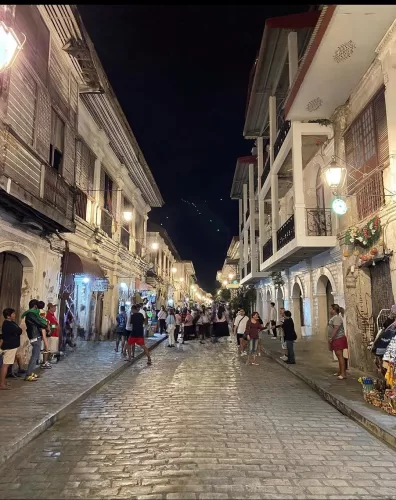
Key Attractions:
- Calle Crisologo: This iconic street is the heart of Vigan’s charm, with its heritage houses, antique shops, and quaint cafes creating an atmosphere of a bygone era.
- Dancing Fountain: A modern addition to the city, the choreographed fountain at Plaza Salcedo lights up at night, offering a contemporary contrast to the historic surroundings.
- Plaza Burgos: Named after the martyr Father José Burgos, this public square is a hub of activity where visitors can savor local street food and observe the daily life of locals.
9. Quezon City
Quezon City is the largest and most populous city in Metro Manila. It served as the country’s former capital and is home to several government institutions, major entertainment companies, and prestigious universities, including the University of the Philippines Diliman and the Ateneo de Manila University.
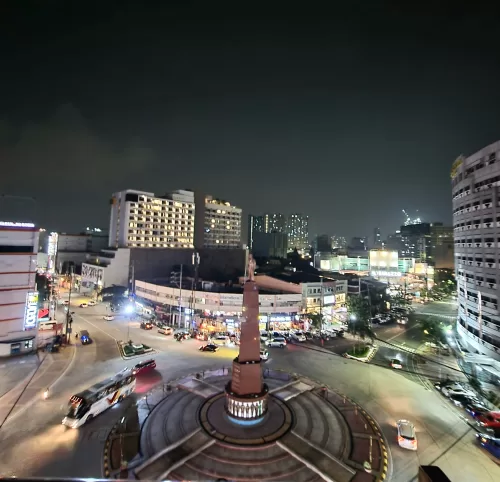
Top Attractions:
- Quezon City Circle: A 27-hectare national park located inside an elliptical road. Its main feature is a 66-meter-tall mausoleum containing the remains of Manuel L. Quezon, the second President of the Philippines. The park currently houses museums, a small amusement park, recreation spaces, restaurants, and gardens.
- La Mesa Ecopark: A 33-hectare nature reserve and eco-park, known for its lush greenery, wildlife, and recreational activities, including hiking, mountain biking, horseback riding, rappelling, zip-lining, and fishing.
- Maginhawa Street: A vibrant street lined with food parks, al fresco dining restaurants, and street food spots. It has gained recognition as a go-to destination for food enthusiasts and creatives alike.
- Timog Avenue and Tomas Morato Avenue: Intersecting streets regarded as Quezon City’s center of entertainment and nightlife, lined with trendy restaurants, bars, and comedy clubs.
- University of the Philippines Academic Oval: An iconic oval-shaped road within the university, surrounded by academic buildings and known for its picturesque landscape. It attracts joggers seeking a scenic route for their runs.
10. Pasay City
Pasay City is strategically positioned along Manila Bay and is known for its vibrant nightlife, with numerous bars, urban resorts, and casinos. The city also plays a significant role in transportation, housing the Ninoy Aquino International Airport and serving as a major gateway for travelers.
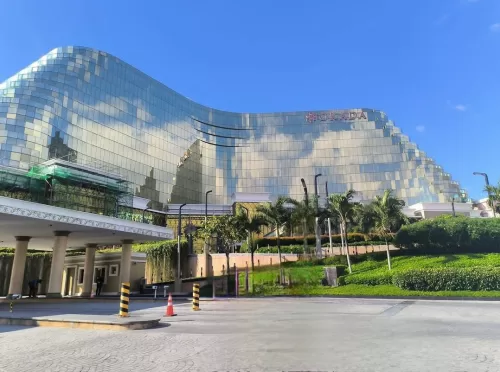
Top Attractions:
- SM Mall of Asia: The Philippines’ largest shopping destination with a diverse mix of retail, entertainment, and dining options, offering a unique shopping experience by Manila Bay.
- Cultural Center of the Philippines: A hub for arts and culture, showcasing Filipino talent through performances, exhibitions, and events that celebrate the rich cultural heritage of the Philippines.
- Resorts World, Okada, and City of Dreams: A trio of world-class integrated resorts and casinos, featuring luxurious accommodations, entertainment venues, and gaming facilities, contributing to Manila’s status as a premier entertainment destination.
- Star City: A popular amusement park in Manila providing a thrilling mix of rides and attractions, making it a favorite destination for families and thrill-seekers alike.
Ron Lao is an engineering graduate with a passion for writing informative content and exploring new places, cultures, and food. He loves science, cats, badminton, and anything wellness-related.


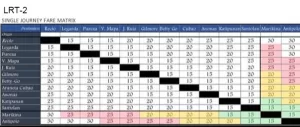

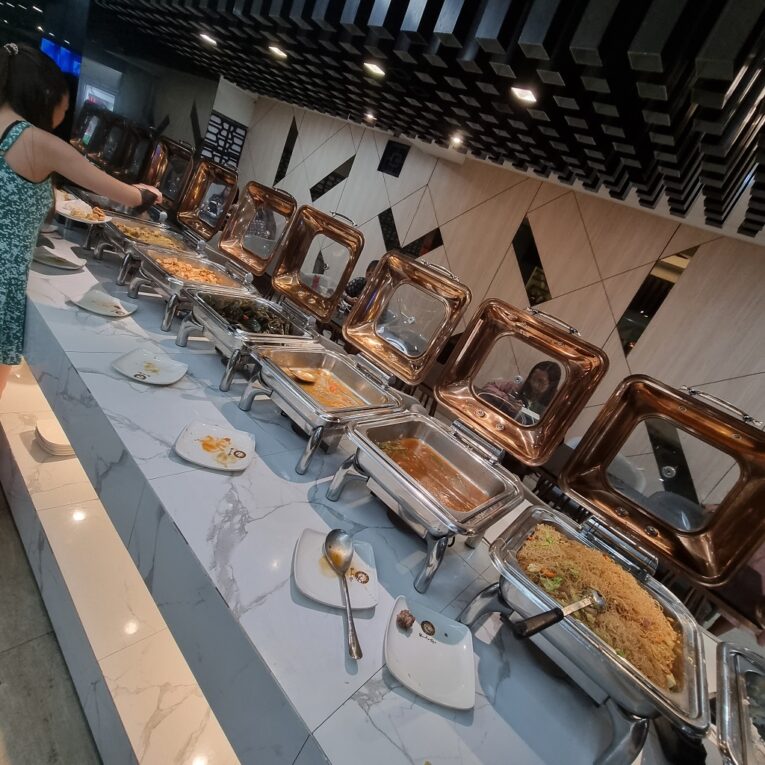
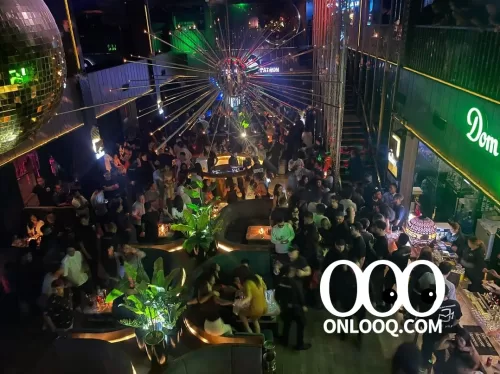
Leave a Reply